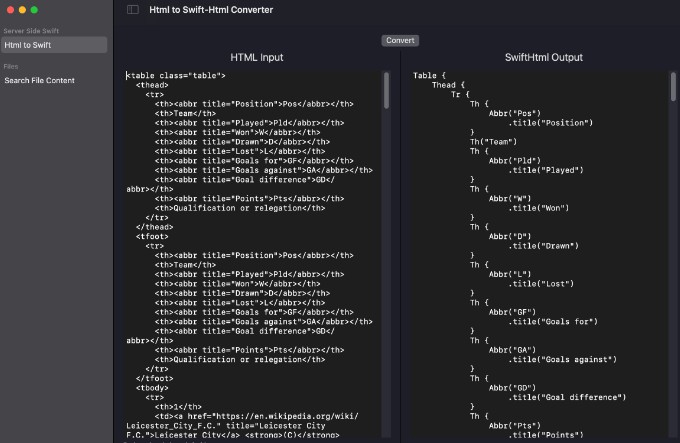Tart is a virtualization toolset to build, run and manage virtual machines on Apple Silicon. Built by CI engineers for your automation needs. Here are some highlights of Tart:
- Tart uses Apple’s own
Virtualization.Frameworkfor near-native performance. - Push/Pull virtual machines from any OCI-compatible container registry.
- Use Tart Packer Plugin to automate VM creation.
- Built-in CI integration.
Try running a Tart VM on your Apple Silicon device running macOS Monterey or later (will download a 25 GB image):
brew install cirruslabs/cli/tart
tart clone ghcr.io/cirruslabs/macos-monterey-base:latest monterey-base
tart run monterey-base
CI Integration
Tart itself is only responsible for managing virtual machines, but we’ve built Tart support into a tool called Cirrus CLI also developed by Cirrus Labs. Cirrus CLI is a command line tool with one configuration format to execute common CI steps (run a script, cache a folder, etc.) locally or in any CI system. We built Cirrus CLI to solve “But it works on my machine!” problem.
Here is an example of a .cirrus.yml configuration file which will start a Tart VM, will copy over working directory and
will run scripts and other instructions inside the virtual machine:
task:
name: hello
macos_instance:
# can be a remote or a local virtual machine
image: ghcr.io/cirruslabs/macos-monterey-base:latest
hello_script:
- echo "Hello from within a Tart VM!"
- echo "Here is my CPU info:"
- sysctl -n machdep.cpu.brand_string
- sleep 15
Put the above .cirrus.yml file in the root of your repository and run it with the following command:
brew install cirruslabs/cli/cirrus
cirrus run
Cirrus CI already leverages Tart to power its macOS cloud infrastructure. The .cirrus.yml
config from above will just work in Cirrus CI and your tasks will be executed inside Tart VMs in our cloud.
Note: Cirrus CI only allows images managed and regularly updated by us.
Virtual Machine Management
Creating from scratch
Tart can create VMs from *.ipsw files. You can download a specific *.ipsw file here or you can
use latest instead of a path to *.ipsw to download the latest available version:
tart create --from-ipsw=latest monterey-vanilla
tart run monterey-vanilla
After the initial booting of the VM you’ll need to manually go through the macOS installation process. As a convention we recommend creating an admin user with an admin password. After the regular installation please do some additional modifications in the VM:
- Enable Auto-Login. Users & Groups -> Login Options -> Automatic login -> admin.
- Allow SSH. Sharing -> Remote Login
- Disable Lock Screen. Preferences -> Lock Screen -> disable “Require Password” after 5.
- Disable Screen Saver.
- Run
sudo visudoin Terminal, find%admin ALL=(ALL) ALLaddadmin ALL=(ALL) NOPASSWD: ALLto allow sudo without a password.
Configuring a VM
By default, a tart VM uses 2 CPUs and 4 GB of memory with a 1024x768 display. This can be changed with tart set command.
Please refer to tart set --help for additional details.
Building with Packer
Please refer to Tart Packer Plugin repository for setup instructions.
Here is an example of a template to build monterey-base local image based of a remote image:
{
"builders": [
{
"name": "tart",
"type": "tart-cli",
"vm_base_name": "tartvm/vanilla:latest",
"vm_name": "monterey-base",
"cpu_count": 4,
"memory_gb": 8,
"disk_size_gb": 32,
"ssh_username": "admin",
"ssh_password": "admin",
"ssh_timeout": "120s"
}
],
"provisioners": [
{
"inline": [
"echo 'Disabling spotlight indexing...'",
"sudo mdutil -a -i off"
],
"type": "shell"
},
# more provisioners
]
}
Here is a repository with Packer templates used to build all the images managed by us.
Working with a Remote OCI Container Registry
For example, let’s say you want to push/pull images to a registry hosted at https://acme.io/.
Registry Authorization
First, you need to log in and save credential for acme.io host via tart login command:
tart login acme.io
Credentials are securely stored in Keychain.
Pushing a Local Image
Once credentials are saved for acme.io, run the following command to push a local images remotely with two tags:
tart push my-local-vm-name acme.io/remoteorg/name:latest acme.io/remoteorg/name:v1.0.0
Pulling a Remote Image
tart pull acme.io/remoteorg/name:latest my-local-vm-name
FAQ
How Tart is different from Anka
Under the hood Tart is using the same technology as Anka 3.0 so there should be no real difference in performance or features supported. If there is some feature missing please don’t hesitate to create a feature request.
Instead of Anka Registry, Tart can work with any OCI-compatible container registry.
Tart doesn’t yet have an analogue of Anka Controller for managing long living VMs. Please take a look at CI integration section for an option to run ephemeral VMs for your needs.
Why Tart is free and open sourced?
Tart is a relatively small project, and it didn’t feel right to try to monetize it.
Apple did all the heavy lifting with their Virtualization.Framework.
How to change VM’s disk size?
You can choose disk size upon creation of a virtual machine:
tart create --from-ipsw=latest --disk-size=25 monterey-vanilla
For an existing VM please use Packer Plugin which can increase disk size for new virtual machines. Here is an example of how to change disk size in a Packer template.
VM location on disk
Tart stores all it’s files in ~/.tart/ directory. Local images that you can run are stored in ~/.tart/vms/.
Remote images are pulled into ~/.tart/vms/cache/OCIs/.
Nested virtualization support?
Tart is limited by functionality of Apple’s Virtualization.Framework. At the moment Virtualization.Framework
doesn’t support nested virtualization.








